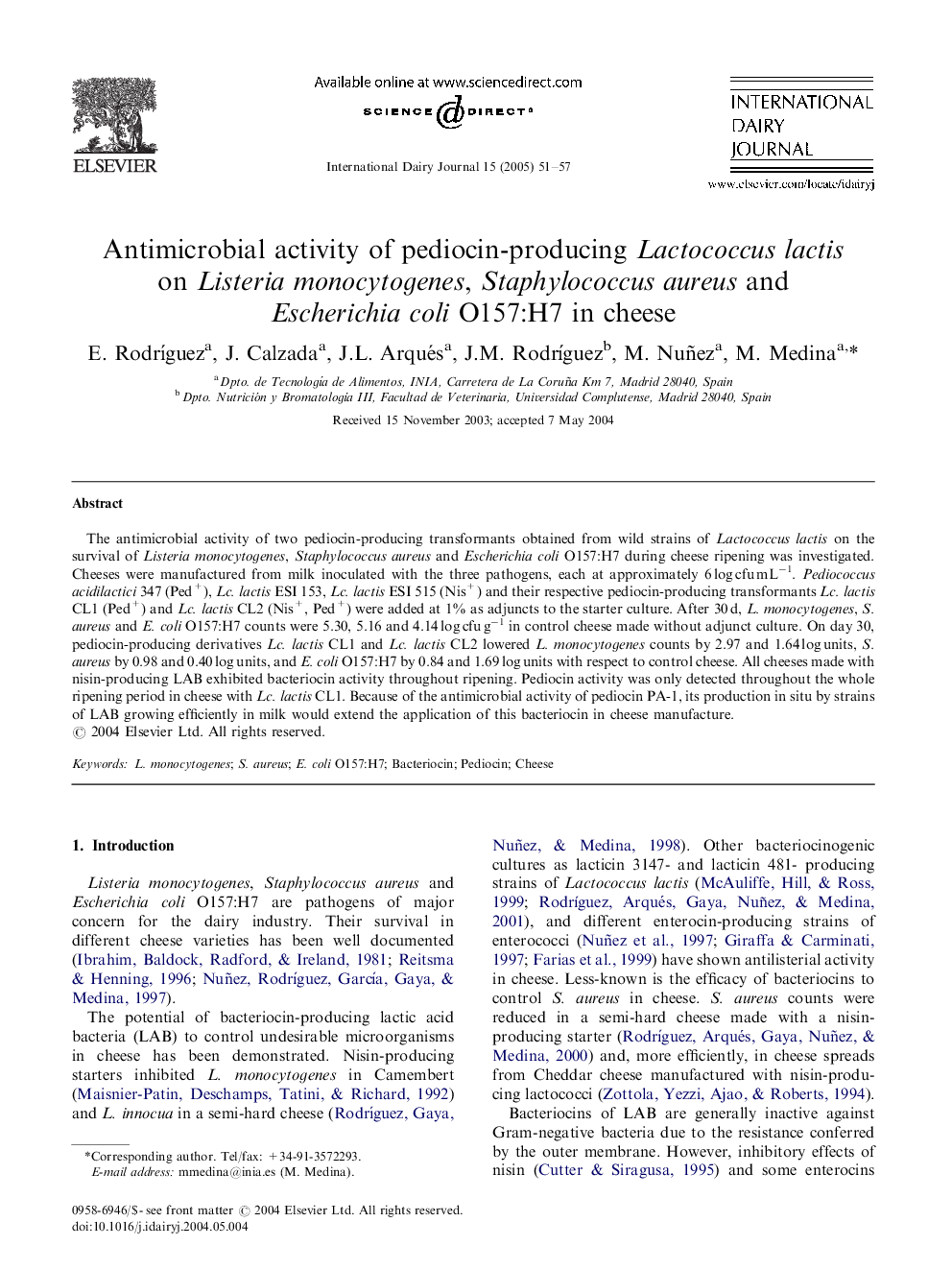| Article ID | Journal | Published Year | Pages | File Type |
|---|---|---|---|---|
| 8979277 | International Dairy Journal | 2005 | 7 Pages |
Abstract
The antimicrobial activity of two pediocin-producing transformants obtained from wild strains of Lactococcus lactis on the survival of Listeria monocytogenes, Staphylococcus aureus and Escherichia coli O157:H7 during cheese ripening was investigated. Cheeses were manufactured from milk inoculated with the three pathogens, each at approximately 6 log cfu mLâ1. Pediococcus acidilactici 347 (Ped+), Lc. lactis ESI 153, Lc. lactis ESI 515 (Nis+) and their respective pediocin-producing transformants Lc. lactis CL1 (Ped+) and Lc. lactis CL2 (Nis+, Ped+) were added at 1% as adjuncts to the starter culture. After 30 d, L. monocytogenes, S. aureus and E. coli O157:H7 counts were 5.30, 5.16 and 4.14 log cfu gâ1 in control cheese made without adjunct culture. On day 30, pediocin-producing derivatives Lc. lactis CL1 and Lc. lactis CL2 lowered L. monocytogenes counts by 2.97 and 1.64 log units, S. aureus by 0.98 and 0.40 log units, and E. coli O157:H7 by 0.84 and 1.69 log units with respect to control cheese. All cheeses made with nisin-producing LAB exhibited bacteriocin activity throughout ripening. Pediocin activity was only detected throughout the whole ripening period in cheese with Lc. lactis CL1. Because of the antimicrobial activity of pediocin PA-1, its production in situ by strains of LAB growing efficiently in milk would extend the application of this bacteriocin in cheese manufacture.
Related Topics
Life Sciences
Agricultural and Biological Sciences
Food Science
Authors
E. RodrıÌguez, J. Calzada, J.L. Arqués, J.M. RodrıÌguez, M. Nuñez, M. Medina,
